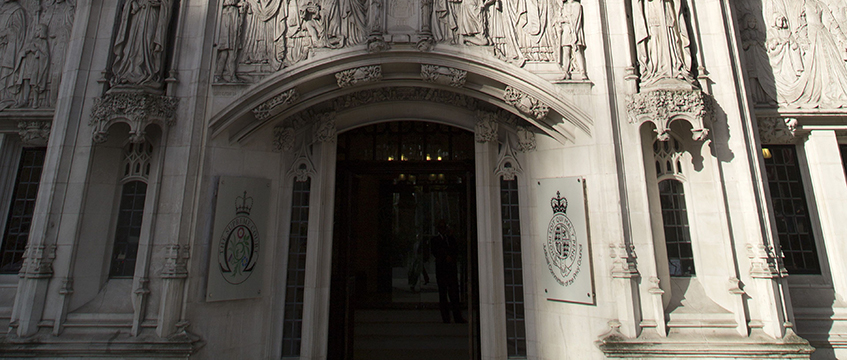Road Traffic – Traffic restriction order – Experiment – Consultation – Claimant motorcycling organisation applying to quash decision of defendant local authority to make experimental traffic regulation order – Whether defendant wrongly failing to consult claimant – Whether claimant having legitimate expectation of consultation – Whether defendant’s statement of reasons addressing all relevant matters – Whether statement of reasons making clear that order experimental – Application granted
The defendant local authority made the County of Wiltshire (Various Byways and Footpath, Amesbury, Berwick St James, Durrington, Wilsford cum Lake and Woodford) (Prohibition of Driving) Experimental Order 2018 pursuant to section 9 of the Road Traffic Regulation Act 1984, which empowered local authorities to make orders for the purposes of carrying out experimental schemes of traffic control. Such orders temporarily restricted or prohibited the use of particular roads, and the order affected seven byways and one footpath close to the Stonehenge World Heritage site. It prohibited the use of motor vehicles, subject to certain exceptions which included agricultural vehicles.
The claimant motorcycling organisation applied under para 35 of part VI of schedule 9 to the 1984 Act to quash that decision, arguing that the order was unlawful on the grounds that: (i) the defendant had failed to consult it beforehand, in breach of regulation 6 of the Local Authorities’ Traffic Orders (Procedure)(England and Wales) Regulations 1996 and its legitimate expectation that consultation would occur; (ii) the defendant’s statement of reasons did not address all relevant matters; and (iii) the statement of reasons did not make it clear that the order was being made for an experimental purpose.
Held: The application was granted.
(1) Regulation 6 of the 1996 Regulations required local authorities to determine whether there were any organisations representing persons likely to be affected by a proposed order and to consult them if it was thought to be appropriate. Local authorities had a discretion and there was no presumption that every such organisation would be consulted. The fact that the proposed order was experimental did not mean that the local authority’s exercise of its discretion would be more rigorously scrutinised than otherwise. On the other hand, the fact that objections could be lodged within the six months after the making of an experimental order did not mean that there was less need for prior consultation. The consultation and the objections provisions were directed to different issues and to different audiences. The fact that the time for observations came only after the experiment had commenced said nothing as to any enhanced need for consultation under regulation 6 before the experimental order was made.
In the present case, the decision taken by the defendant not to consult was not rational. In its reasons, the defendant failed to recognise that regulation 6 consultation addressed a different question from the one addressed by the chance to make objections. The defendant’s decision on its discretion under regulation 6 rested on reliance on an irrelevant consideration. The relevant question for the defendant was whether it was appropriate to consult with any organisation representing persons likely to be affected by the experimental order and the considerations mentioned in its evidence did not address that question at all. The reasons relied on in the defendant’s evidence were not logically connected to the question posed by the requirement at line 7(c) of the table in regulation 6 of the 1996 Regulations.
(2) The claimant had no legitimate expectation of consultation based on the fact that it was a member of a local access forum established by the defendant under section 94 of the Countryside and Rights of Way Act 2000. The defendant had not made any clear and unambiguous representation that it would consult the forum if it ever sought to use its powers under the Act in respect of the byways. Under the 2000 Act, a local access forum was an advisory body. That function did not give rise to any corresponding obligation on the local authority to consult the local access forum or any expectation of consultation. Although a local access forum could only discharge its advisory function if it was suitably informed of relevant matters, the source of such information need not (and often would not) be the local authority; in this case the local access forum would have sufficient information to fulfil its advisory function in respect of the 2018 Order through publication by the defendant of the notice of making in accordance with regulation 22(2) of the 1996 Regulations.
(3) The defendant’s failure to reference in its reasons a planning inspector’s report made following a public inquiry into a similar traffic restriction order proposed in 2010 did not amount to a failure to take account of a material consideration. While any exercise of the section 9 power had to serve at least one of the purposes in section 1(1) of the 1984 Act and entail one or more of the measures listed in section 2, local authorities had significant latitude when deciding what were material considerations. The statement of reasons had to contain a clear explanation of the order and why it was being made. Here, it showed that the predominant reasons for the 2018 Order were the apparent increase in motorised traffic and the defendant’s belief that that was damaging the byways and causing difficulties for non-motorised users. The focus of the 2018 Order was thus very different from that of the proposed 2010 Order which had been put forward on the basis that prohibiting use of the byways by motor vehicles was expedient to preserve or improve the amenities of the area around the byways.
(4) An experiment had to underlie any order made under section 9 of the 1984 Act and had to be identified in the statement of reasons. The traffic authority also had to have a rational basis for the experiment but there was no requirement for elaborate explanation, and what was in the defendant’s statement of reasons was enough. It was apparent that the defendant was concerned to establish both the cause of damage to the byways, and whether, if there were less motorised traffic on the byways, other users would use them more. A rational basis for the experiment was described in the statement of reasons: Trail Riders Fellowship v Peak District National Park Authority [2012] EWHC 3359 (Admin); [2012] PLSCS 268 applied.
Adrian Pay (instructed by Brian Chase Coles, of Basingstoke) appeared for the claimant; Trevor Ward (instructed by Wiltshire County Council) appeared for the defendant.
Eileen O’Grady, barrister
Click here to read a transcript of Trail Riders Fellowship v Wiltshire County Council










